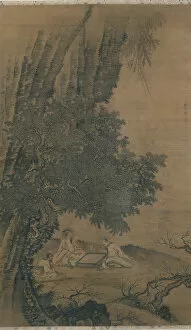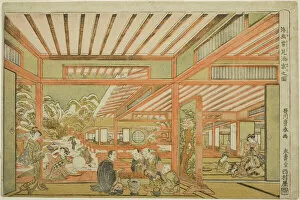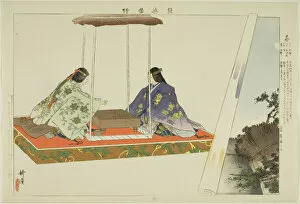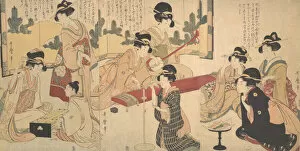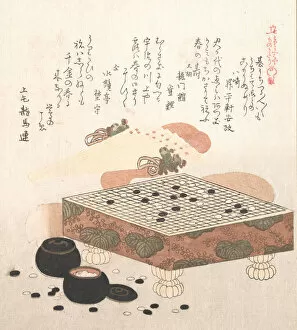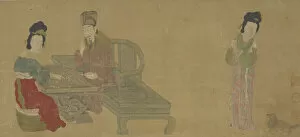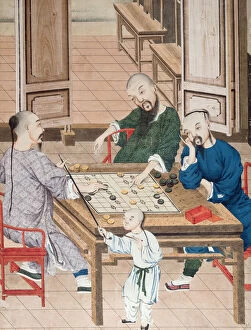Weiqi Collection
"Weiqi: The Ancient Chinese Game of Strategy" Weiqi, also known as Go, is a captivating game that has been played in China for centuries
For sale as Licensed Images
Choose your image, Select your licence and Download the media
"Weiqi: The Ancient Chinese Game of Strategy" Weiqi, also known as Go, is a captivating game that has been played in China for centuries. Its origins can be traced back to ancient times, and it continues to be enjoyed by people all over the world today. The artwork depicting Weiqi throughout history provides us with a glimpse into the rich cultural heritage surrounding this game. From the delicate gouache painting of Chinese players engaged in intense concentration during the late 19th century to the intricate stamp showcasing two individuals engrossed in their strategic moves, these images capture the essence of Weiqi. In Ming dynasty's 15th-century landscape painting, Daoist Immortals are seen indulging in a friendly match amidst serene surroundings. This portrayal not only highlights the intellectual aspect of the game but also its harmonious connection with nature. Even beyond China's borders, Weiqi found its way into Japanese art and culture. Hokusai's masterpiece from Japan's Edo period depicts Chinese and Tartar boys quarreling over a game of Go. The intensity on their faces reflects how deeply rooted this game was within society at that time. Snuff bottles adorned with scenes related to Weiqi demonstrate how deeply ingrained this pastime was even among Qing dynasty elites. These intricately designed bottles showcase various elements such as boys playing alongside gentlemen or even buffalos engaging in strategic battles - all paying homage to this beloved game. Utagawa Toyoharu's snow-viewing entertainment piece transports us to a winter scene where friends gather around a heated board for an exciting session of Weiqi. The artist beautifully captures both social interaction and mental stimulation brought about by this timeless pursuit. Kogyo Tsukioka's series "Pictures of No Performances" takes us further into late 19th-century Japan, where Yo (a type of Noh theater performance) is depicted.



